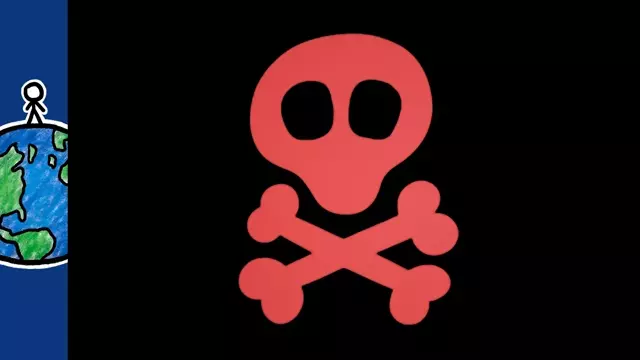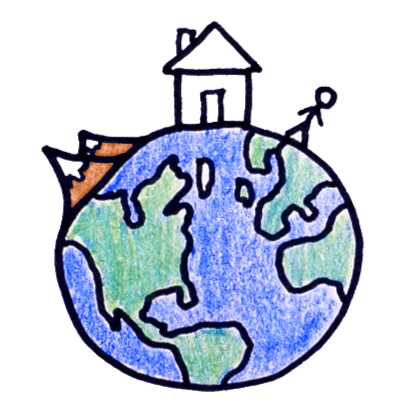2020-07-31
[public] 755K views, 29.2K likes, dislikes audio only
Sign up for your FREE trial to The Great Courses Plus here: http://ow.ly/Nkq830qWCSh
Our new evolution simulator reveals that extinction often happens when conditions change quickly. Check it out here: https://labs.minutelabs.io/evolution-simulator/
Thanks also to our Patreon patrons https://www.patreon.com/MinuteEarth and our YouTube members.
___________________________________________
To learn more, start your googling with these keywords:
Extinction: The moment when the last individual of a particular species dies.
Interspecific Competition: When individuals of different species compete for the same resources or habitats.
Thylacine: The so-called Tasmanian Tiger, it is one of the largest predatory marsupials; the last known individual was captured in 1933.
Invasive Species: Any kind of organism that gets introduced to a new environment and causes harm.
Holocene Extinction: The so-called sixth mass extinction, mostly involving larger animals, that started at the end of the last Ice Age, mostly due to human activity. Extinction rates during this time are 100-1000 times higher than usual.
Anagenesis: The gradual evolution of a species over time.
_________________________________________
Subscribe to MinuteEarth on YouTube: http://goo.gl/EpIDGd
Support us on Patreon: https://goo.gl/ZVgLQZ
And visit our website: https://www.minuteearth.com/
Say hello on Facebook: http://goo.gl/FpAvo6
And Twitter: http://goo.gl/Y1aWVC
And download our videos on itunes: https://goo.gl/sfwS6n
___________________________________________
Credits:
Script Writer: David Goldenberg
Video Illustrators: Sarah Berman and Jasper Palfree
Video Director: Kate Yoshida and David Goldenberg
Video Narrator: Kate Yoshida and Jasper Palfree
With Contributions From: Henry Reich, Alex Reich, Ever Salazar, Peter Reich, Julián Gómez, Arcadi Garcia Rius
Music by: Nathaniel Schroeder: http://www.soundcloud.com/drschroeder
Audio Effect: Scratch Speed by Freesound.org user Racoonanimator
___________________________________________
References:
Cahill, A., Aiello-Lammens, M., M. Caitlin Fisher-Reid, Xia Hua, Caitlin J. Karanewsky, Hae Yeong Ryu, Gena C. Sbeglia, Fabrizio Spagnolo, John B. Waldron, Omar Warsi and John J. Wiens (2013). How does climate change cause extinction? Proceedings of the Royal Society. 280 (1750). Retrieved from: https://royalsocietypublishing.org/doi/10.1098/rspb.2012.1890.
Marcel Cardillo, Georgina M. Mace, Kate E. Jones, Jon Bielby, Olaf R. P. Bininda-Emonds, Wes Sechrest, C. David L. Orme, Andy Purvis (2005). Multiple Causes of High Extinction Risk in Large Mammal Species. Science. 309(5738). Retrieved from: https://science.sciencemag.org/content/309/5738/1239.abstract.
Craig Loehle, Willis Eschenbach (2011). Historical bird and terrestrial mammal extinction rates and causes. Diversity and Distributions, 18(1), 84-91. Retrieved from: https://onlinelibrary.wiley.com/doi/abs/10.1111/j.1472-4642.2011.00856.x
Johnson, CN, Wroe, S. (2003). Causes of Extinction of Vertebrates during the Holocene of Mainland Australia: Arrival of the Dingo, or Human Impact?. The Holocene. 13 (6): 941–948. Retrieved from: https://journals.sagepub.com/doi/10.1191/0959683603hl682fa
Seth M. Rudman, Dolph Schluter. (2016).Ecological Impacts of Reverse Speciation in Threespine Stickleback. Current Biology, 26(4), 490-495. Retrieved from: https://www.sciencedirect.com/science/article/pii/S0960982216000403.
/youtube/video/SHJDgWWGZo4?t=62
/youtube/video/SHJDgWWGZo4?t=307
/youtube/video/SHJDgWWGZo4?t=354
/youtube/channel/UCeiYXex_fwgYDonaTcSIk6w
https://patreon.com/minuteearth
youtube.com/watch?v=6nMo8T3T0L4

